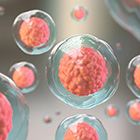Detailed Protocol for the Novel and Scalable Viral Vector Upstream Process for AAV Gene Therapy Manufacturing

Recombinant adeno-associated viral (rAAV) vector-based gene therapy has been adapted for use in more than 100 clinical trials. This is mainly because of its excellent safety profile, ability to target a wide range of tissues, stable transgene expression, and significant clinical benefit. However, the major challenge is to produce a high titer, high potency vector to achieve a better therapeutic effect. Even though, the three plasmid based transient transfection method is currently being used for AAV production in many clinical trials, there are complications associated with scalability and it is not cost effective. Other methods require either large scale production of two HSV viruses, rHSV-RepCap and rHSV-GOI (Gene of Interest), with high titers, or a stable cell line with high titer wild type adenovirus infection. Both of these options make the process even more complex. To address this issue, we have developed a stable cell line based production with the use of only one rHSV-RepCap virus. Using this new methodology in small scale production, we achieved approximately 1-6 E+04 vg/cell of AAV9 in the top producer clones. Large scale production in 10-CS (10-Cell Stack) of one of the top producing clones resulted in approximately 1-2 E+13 vg/10-CS with 50% of full capsid ratio after purification. This method could potentially be adapted to suspension cells. The major advantage of this novel methodology is that by using the rHSV-RepCap virus, high titer AAV can be produced with any gene of interest containing a stable adherent or suspension producer cell line. Using this AAV production platform could be beneficial for the treatment of many diseases.
Selvaraj, N.; Wang, C.K.; Bowser, B. et al. Human Gene Therapy 2021. doi:10.1089/hum.2020.054

